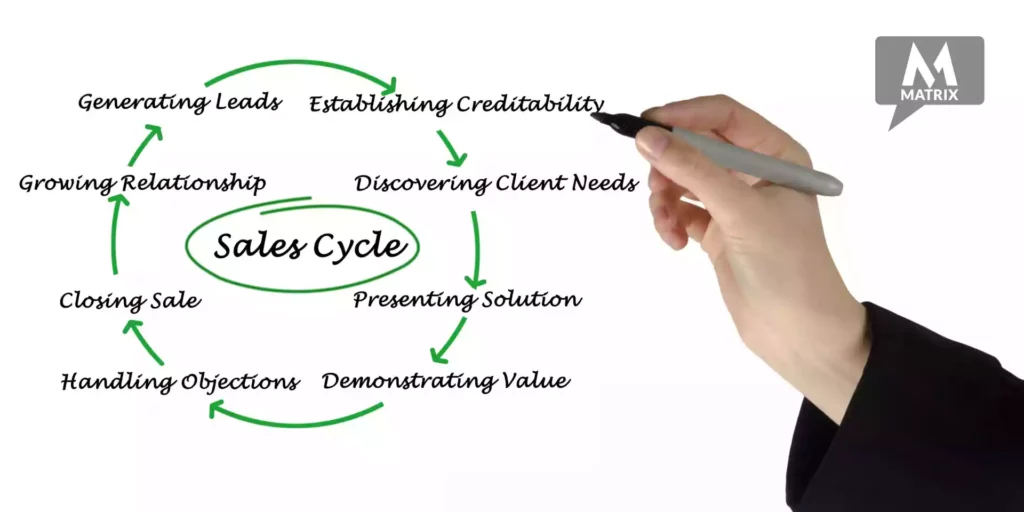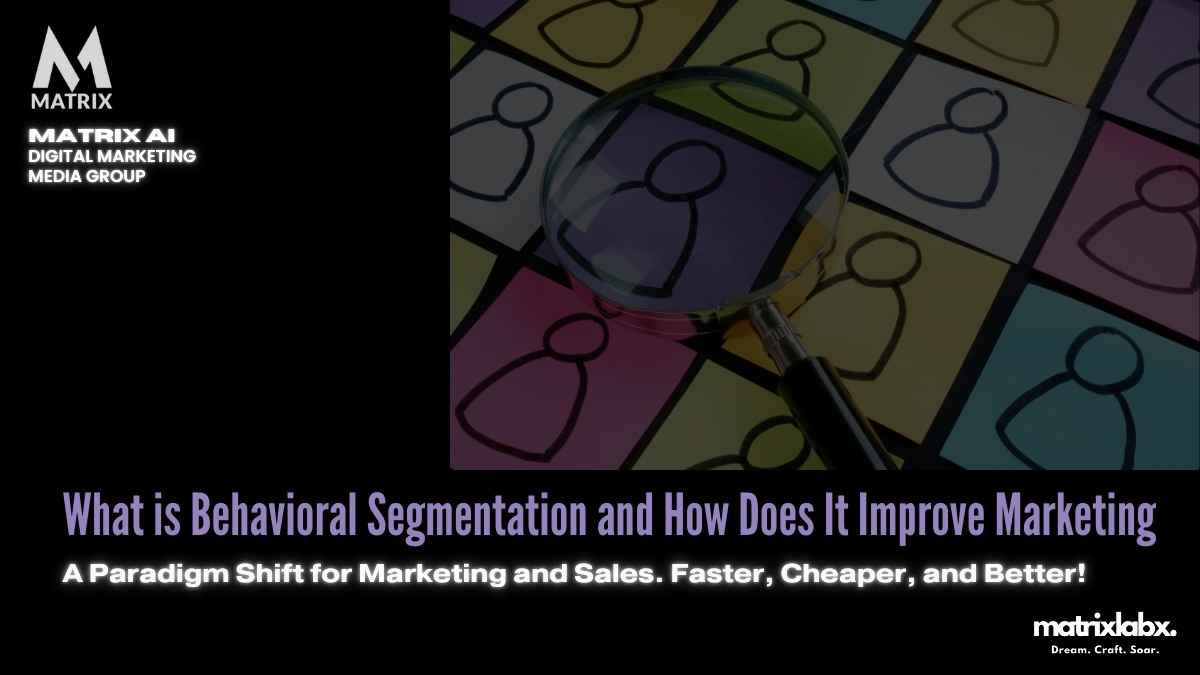Behavioral segmentation is necessary for modern marketers to understand
Behavioral segmentation is necessary for modern marketers to understand lead capture and conversion better. Learn how to use behavioral data to improve conversion, retention, and revenue.
Market segmentation divides customers into groups to achieve better sales, marketing, and customer service outcomes. There are four basic types of market segmentation, each defined by its principle of segmentation. These are:
- demographic segmentation
- psychographic segmentation
- geographic segmentation
- behavioral segmentation
In marketing, behavioral segmentation is usually overlooked in favor of one of the other three methods. This has more to do with established marketing industry habits and less with the method’s effectiveness.
When behavioral segmentation is fully utilized, it can improve marketing outcomes to the same degree as these other methods.
According to a recent sales study by Really Simple Systems, behavioral segmentation is also becoming an increasingly important factor in sales performance in both B2B and B2C sectors.
We wrote a short primer on behavioral segmentation to help you understand what it is, how it works, and why it’s useful for marketing. The primer is available in the paragraphs below.
Drive Better Results with a Complimentary Marketing Audit
Take the guesswork out of your marketing strategy. Our Free Marketing Audit is designed to analyze your current efforts, identify gaps, and uncover growth opportunities. Whether you’re struggling with low ROI, limited engagement, or unclear targeting, we’ll provide actionable insights to help you achieve your business goals.
The Definition of Behavioral Segmentation
Behavior segmentation organizes prospects, leads, and customers into groups based on the concrete actions they take, offline and online, and the broader behavioral patterns these actions generate over longer periods.
Behavioral segmentation is a marketing segmentation that divides people into different groups with specific behavioral patterns. Users may share the same lifecycle stage, previously purchased particular products, or react similarly to your messages.
An easy way to think about it is to say that where the other three types of segmentation are concerned with who the customers are, behavioral segmentation is concerned with what the customers do. 10 Most In-Demand Types of SEO Services to Focus On in 2025
The Value of Behavioral Segmentation
Behavioral segmentation can help businesses elevate their marketing efforts in various ways.
The main advantage comes from using behavioral data to craft personalized marketing experiences for customers based on their activity patterns before, during, and after purchase.
More specifically, behavior segmentation allows you to:
- determine which products customers are more likely to buy based on their past purchasing behavior
- rank customers based on their propensity to buy
- map customer buying habits on a temporal axis
- create marketing content that matches customer buying habits
- measure how customer buying behavior changes over time
- discover and capitalize on emerging trends in customer behavior
In short, behavioral segmentation helps businesses understand what customers are doing and why they’re doing it based on their past behavior. This insight is essential for marketing campaigns that match customer needs, wants, and desires.
For example, if you are trying to engage your customers more by creating a quiz, all the data gathered can help you create perfect questions.
Behavioral segmentation is also essential for providing supplemental data for other segmentation types. Demographic, psychographic, and geographic segmentation is useless since it can’t provide actionable insights into how customers are likely to behave. 10 Most In-Demand Types of SEO Services to Focus On in 2025
Struggling to Keep Up with Content Demands?
In today’s digital landscape, creating consistent, high-quality content is more challenging—and more important—than ever. Without a clear plan and the right tools, your brand risks falling behind in the crowded marketplace.
The 6 Main Categories of Behavioral Segmentation
In practice, behavioral segmentation describes six different kinds of behavioral analysis. Each form of analysis can support a variety of marketing strategies and methods.
The 6 main categories include:
- Purchasing habit analysis
- Customer journey mapping
- Benefits sought analysis
- Product usage tracking
- Brand interactions breakdown
- Spending habit investigation
Purchasing Habit Analysis
Purchasing habit analysis examines how individual purchasing decisions form buying patterns. It has yielded at least four types of purchasing behavior patterns, but other classifications are possible.
These 4 main patterns include:
- The comprehensive researcher pattern describes customers who like to take their time doing research before committing to a purchase. They compare and contrast different products, consult different sources of information, and look at available customer feedback to find the product that perfectly matches their needs.
- The novelty seeker pattern describes customers who have a safe fallback option for a product they want to buy but are willing to consider other options for variety’s sake. They are not in a rush to purchase, so they tend to focus more on each product’s unique features.
- The conflict resolver. This pattern describes customers who are somewhat satisfied with their current product choices but feel they could do better. Their purchasing habits are defined by a dilemma between sticking with what they know or taking risks and trying something new.
- The habitual buyer. This pattern describes customers who like to make a buying decision once and then never think about it again. Once they find a product that sufficiently meets their needs, they will stick with it unless external circumstances prevent them from indulging in their habit.
Customer Journey Mapping

Customer journey mapping is a behavior segmentation approach that looks at customers’ decisions during each buying process stage.
Customer journey mapping is part of the customer lifecycle approach to marketing. Marketing messages are tailored to fit customers based on their current position within the buyer’s journey.
Here is the template for a typical customer journey:
- The awareness stage. The customer becomes conscious of their desire to buy.
- The engagement stage. The customer begins searching for products to buy.
- The evaluation stage. The customer compares products that meet their criteria.
- The purchase stage. The customer has decided to take action to complete a purchase.
- The post-purchase stage. The customer seeks support after purchase.
Benefits Sought Analysis
Benefits sought analysis concerns customer purchasing decisions related to the product’s value. It seeks to understand which product features are essential to customers and how they factor into their product choices.
Two examples will serve as an illustration. For instance, it would be reasonable to conclude that a product’s price is the main deciding factor in purchasing customers who always take the cheapest option when comparing different products.
Suppose a customer tends to browse product pages for 100% organic and vegan-friendly items. In that case, they might want to help the environment with their purchase.
Product Usage Tracking and Behavioral Segmentation

Product usage tracking segments customers based on product usage frequency and intensity. This form of segmentation has the next three basic tiers:
- Light users. This segment comprises customers who rarely use products and/or for a limited duration. They represent customers who like to be prepared for all possible use-case scenarios, including those that only crop up occasionally.
- Average users. This segment includes customers who use products semi-regularly. They like to have products available to them at all times, but they don’t necessarily use them frequently.
- Heavy users. This segment comprises customers who regularly use products for work, leisure, or other recurring needs. These customers often deeply understand products and take special care when deciding which product to buy.
Brand Interactions Breakdown

Brand interaction breakdown is a form of segmentation that groups customers based on how they communicate with businesses.
This kind of segmentation benefits marketers, as it closely reflects how they approach marketing content creation. Depending on the business, brand interactions come in various forms, offline and online.
Examples of customer behavior that fall under this segmentation strategy include:
- How often do customers login into their account on your website
- Which channels do they use to ask for customer support?
- Which product pages do they visit on your web store?
- Whether they post comments on social media
- Which content emails do they reply to
Spending Habit Investigation
Spending habit investigation breaks down customers based on where, when, and how they spend money. This form of segmentation is helpful for directly determining how customers affect your bottom line on average.
Spending habit segmentation often divides customers into pairs of those that:
- Prefer buying in-person vs. buying online
- use coupons vs. don’t use coupons
- use store credit vs. don’t use the store credit
- buy during discounts vs. buy irrespective of discounts
- buy in bulk vs. buy in small increments
Content That Converts: Transparent Pricing for Maximum ROI
Explore Matrix Marketing Group’s Flexible Pricing Plans for Premium Content and Marketing Solutions Tailored to Your Goals.
Using Behavioral Segmentation for Marketing
Now that we’ve covered the basics of behavioral segmentation, it is time to examine its uses in marketing.
Let’s look at 4 everyday use case scenarios.
Performing Audience Research
Audience research is an integral part of marketing. Behavioral segmentation makes it substantially easier to figure out who your audience is and what they want regarding marketing content.
Behavior is usually a better indicator of a customer’s identity than the information they provide as part of a purchase or what they claim they want in surveys. Behavioral segmentation also helps you predict how customers will react to your marketing, not just how they feel about it.
Outlining Buyer Personas
Buyer personas are essential for focusing your marketing efforts and thus improving marketing efficiency. A buyer persona is not defined just in terms of their likes and dislikes and what behavior they tend to prefer.
Behavioral segmentation, therefore, gives you a solid foundation for understanding which buyer personas you should target and how to nudge them best to take the actions you want them to take.
This might sound like you want their money, but many people are aimlessly searching and need help.
Personalizing Customer Journeys
Understanding who your customers are allows you to customize your marketing output to fit their needs precisely. Behavioral segmentation is, therefore, a key element of marketing personalization.
It allows you to understand which form of marketing communication is likely to work and which won’t, and it also allows you to predict the likely behavioral response to your messaging so you can always be one step ahead and create personalized customer journeys that your customers will love.
Running Behavioral Marketing Campaigns
Running large-scale marketing campaigns requires foresight, planning, and consistent execution. However, even the best-planned campaign can fail due to some unforeseen quirks of the target audience.
Behavioral segmentation can help curb this risk by providing concrete, actionable data on customer behavior.
And with successive campaigns, you will have more behavioral data at your disposal, allowing you to create, maintain, and optimize even better marketing campaigns.
Achieving Better Marketing Outcomes Through Behavior Segmentation
Dividing customers into segments based on their previous interactions allows businesses to understand how their customers act before, during, and after buying a product.
Without behavioral segmentation, other methods, such as demographic-based segmentation, will lack the context to create personalized customer experiences.
Behavioral segmentation enables you to take advantage of the buying behavior patterns of your priority customers. You’ll be able to nudge customers into mutually beneficial behavior patterns and spend less money on marketing overall.
We’re listening.
Have something to say about your thoughts on behavioral segmentation?
Share it with us on Facebook, Twitter, or LinkedIn.
Unlock Your Website’s Full Potential with a SEO Fix Program
Even the best websites can struggle without robust SEO. Our $2,500 SEO Quick Fix Package is crafted for businesses that demand fast, measurable results. We start with an in-depth SEO audit to diagnose your site’s performance, then implement five targeted optimizations to boost your rankings and drive more traffic.
General FAQs
What is behavioral segmentation?
Behavioral segmentation divides consumers according to their behavior patterns as they interact with a company. Behavioral marketing aims to understand how to address the particular needs and desires of customer groups and tailor your product or service to meet those needs and desires.
What is behavioral segmentation in marketing?
Behavioral segmentation is a marketing process that divides customers into segments depending on their behavior patterns when interacting with a particular business or website.
What is the customer journey?
A customer journey map visually represents the customer journey (the buyer or user journey). It outlines a customer’s steps from initial contact with your business to becoming an active user or customer. It can be used to identify points at which customers might drop off, get frustrated, or have an “Aha!” moment that leads them to become loyal advocates for your business.
What are customer journey maps?
A customer journey map is a visual representation of the customer journey. It helps to understand the customer’s interaction with a company, their needs, and how the company can better meet them. It also identifies areas for improvement to optimize customer experience and increase loyalty.


